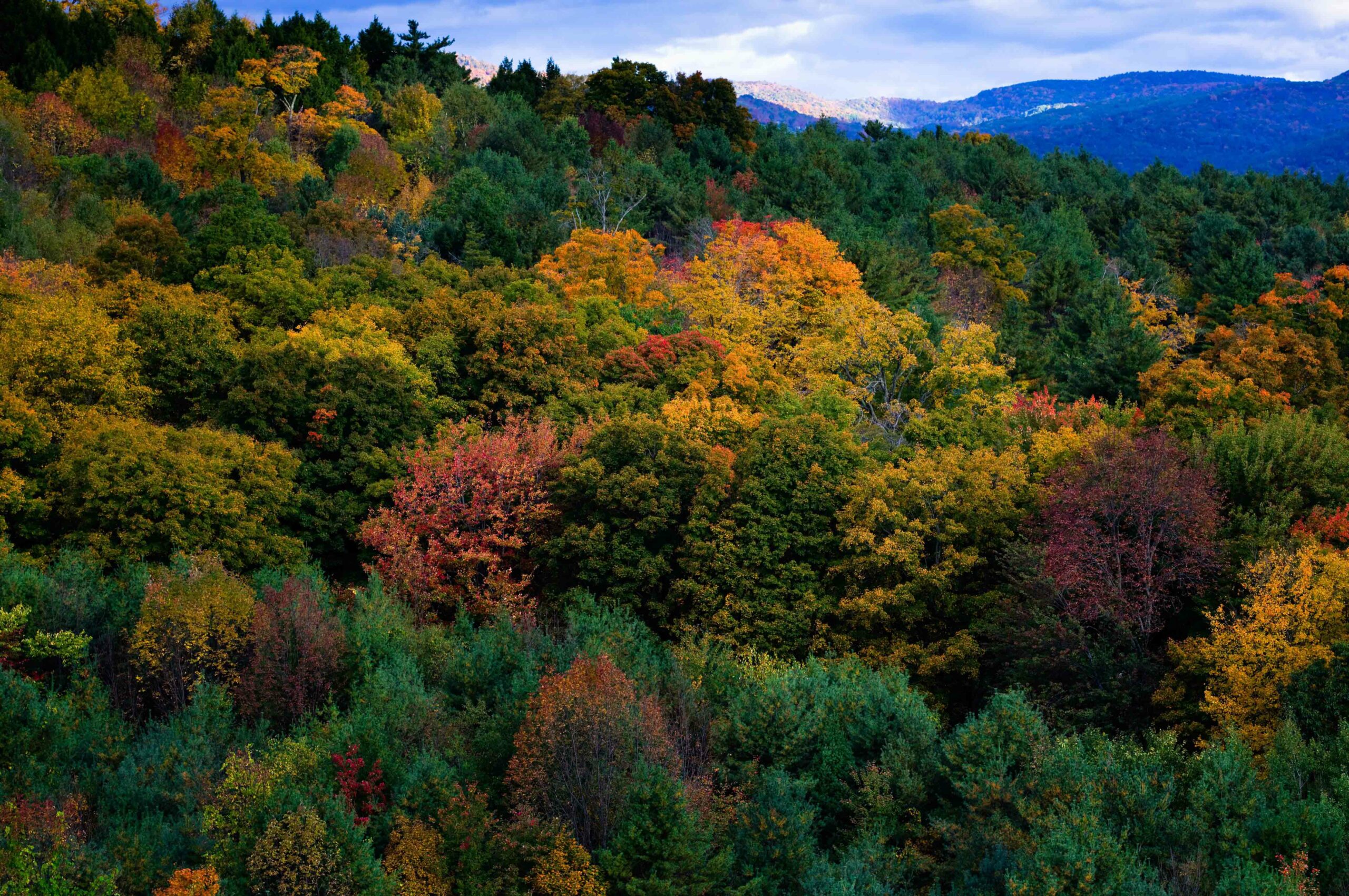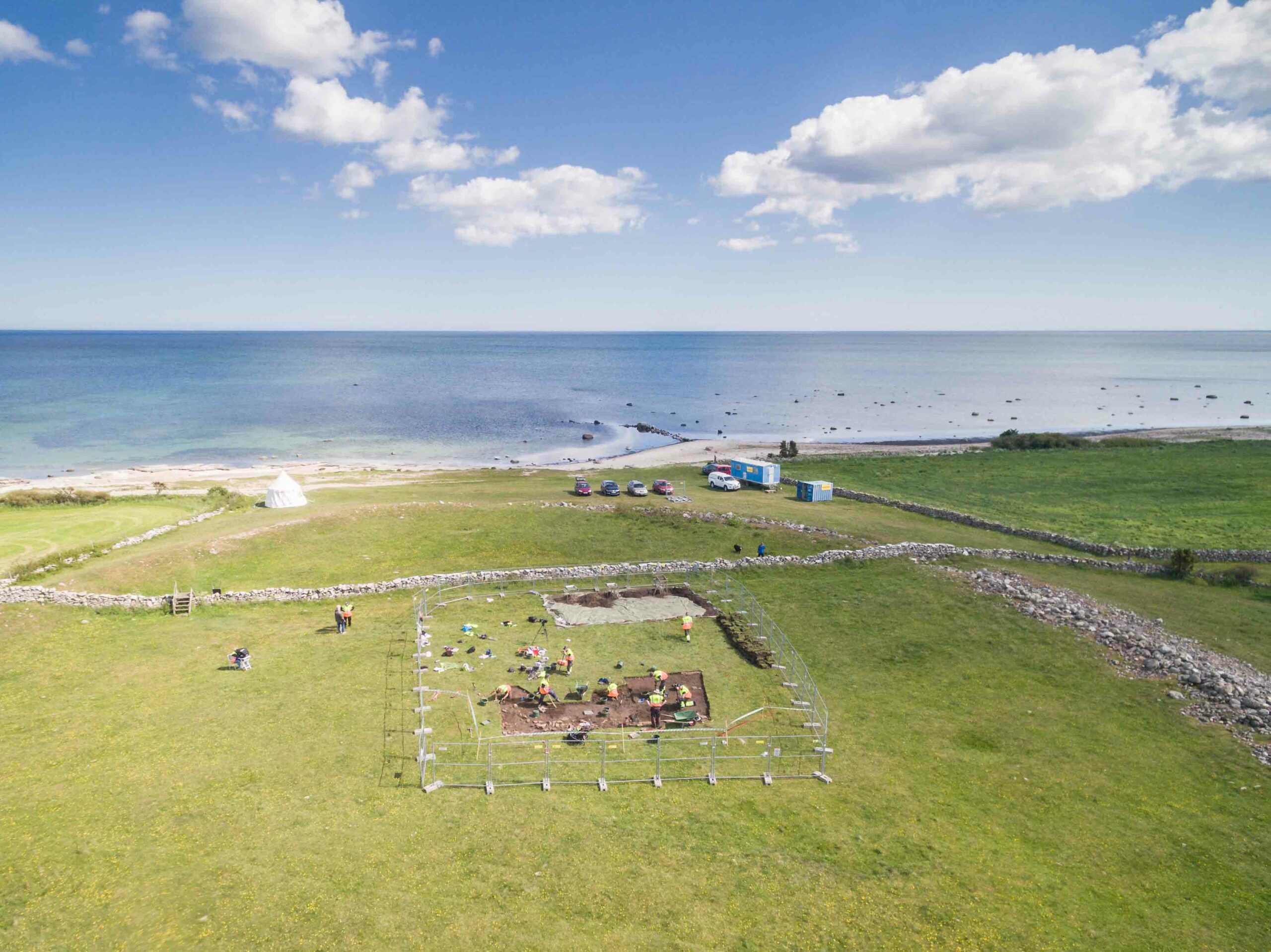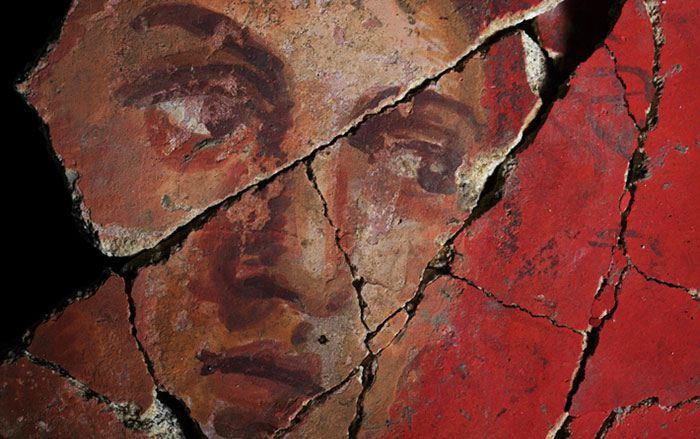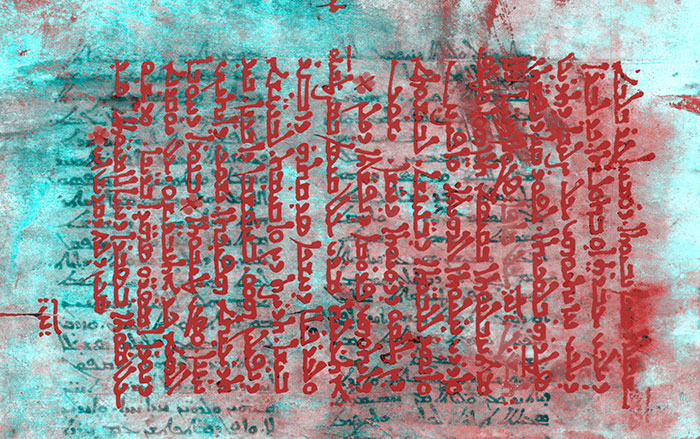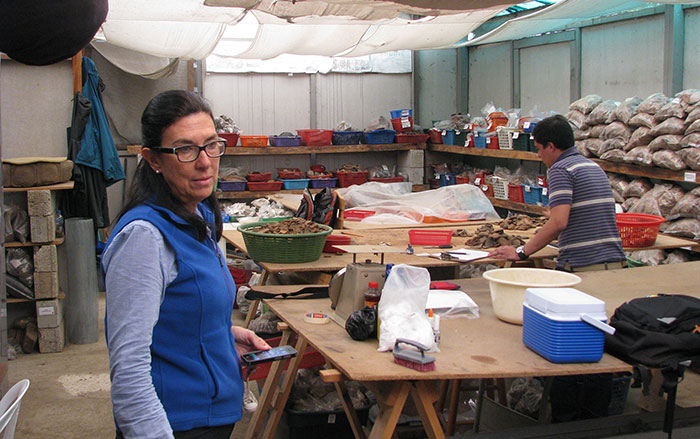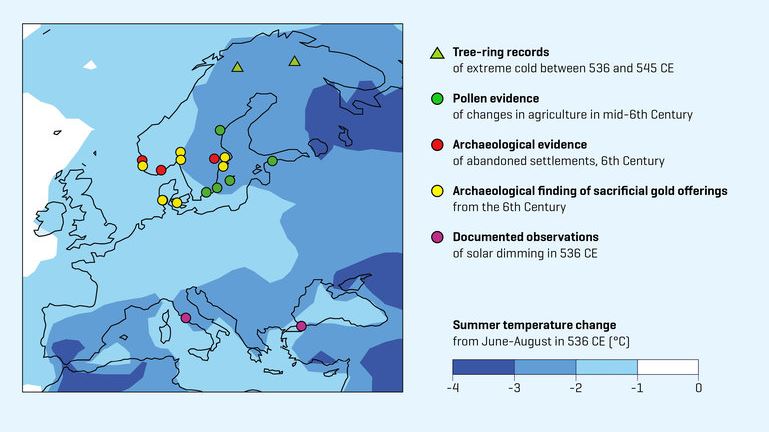
KIEL, GERMANY—Climate change in the sixth century A.D. may have contributed to the circumstances that brought on the Dark Ages, according to a report by Agence France-Presse. The lack of sunlight from a “mystery cloud” in A.D. 536 was recorded by historians in Rome and China, and the poor growing conditions in the Northern Hemisphere have also been noted in tree rings from the period. Matthew Toohey of the GEOMAR Helmholtz Centre for Ocean Research and an international team of scientists developed climate model simulations to reconstruct the possible effects of two volcanoes in the mid-sixth century A.D., whose ash has been detected in ice cores from Greenland and Antarctica. The team estimated the magnitude of the eruptions, their approximate locations, and the spread of sulfur and ash that may have lowered the average temperature in the Northern Hemisphere up to two degrees Celsius. Where do they think the volcanoes erupted? “Several candidates are being discussed, including volcanoes in Central America, Indonesia, and North America. Future studies will be necessary to show the exact source of the aerosol clouds of 536/540,” Toohey said. To read about the excavation of a site dating to the early medieval period, go to "The Kings of Kent."


